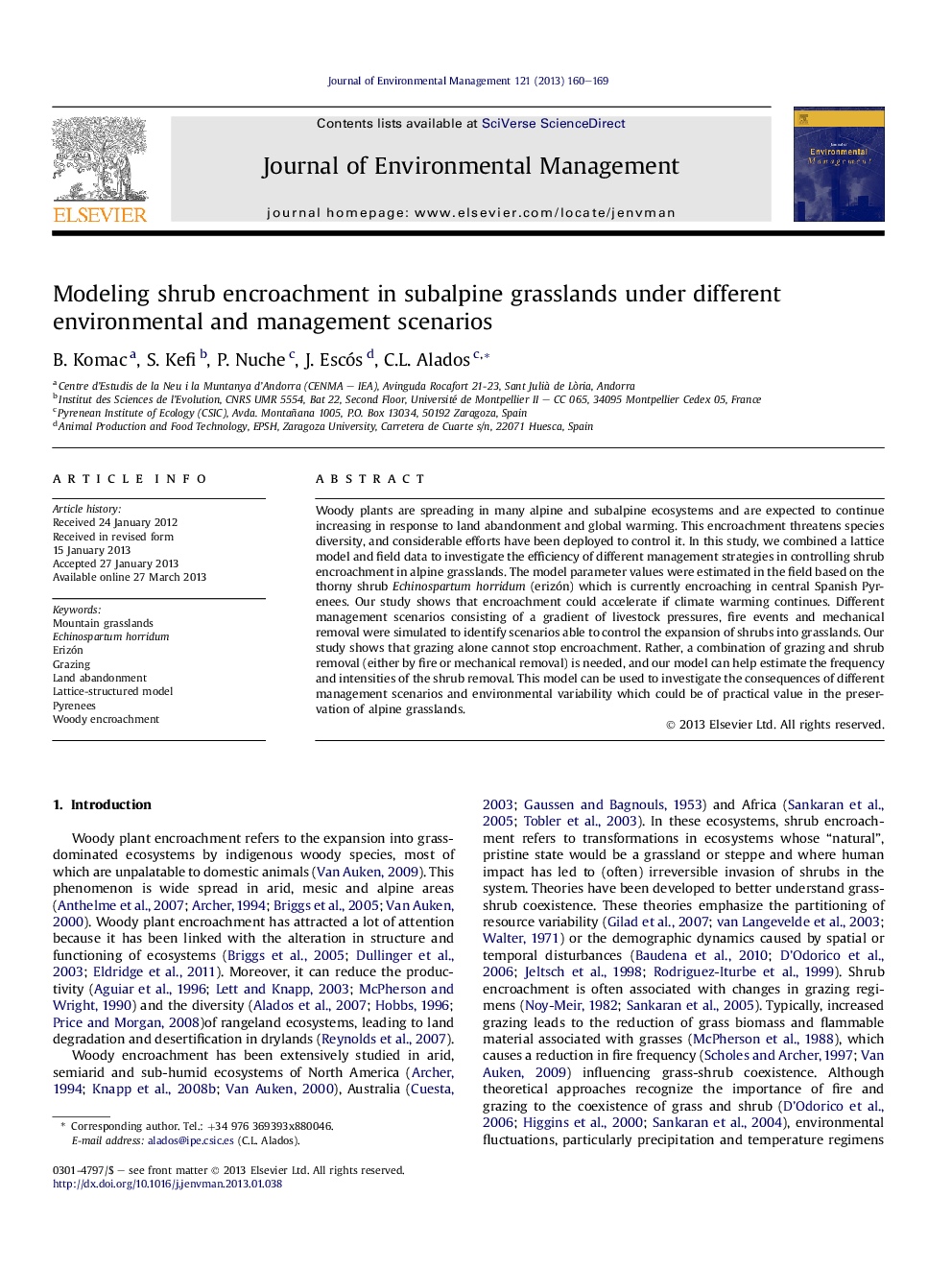| Article ID | Journal | Published Year | Pages | File Type |
|---|---|---|---|---|
| 1056366 | Journal of Environmental Management | 2013 | 10 Pages |
Woody plants are spreading in many alpine and subalpine ecosystems and are expected to continue increasing in response to land abandonment and global warming. This encroachment threatens species diversity, and considerable efforts have been deployed to control it. In this study, we combined a lattice model and field data to investigate the efficiency of different management strategies in controlling shrub encroachment in alpine grasslands. The model parameter values were estimated in the field based on the thorny shrub Echinospartum horridum (erizón) which is currently encroaching in central Spanish Pyrenees. Our study shows that encroachment could accelerate if climate warming continues. Different management scenarios consisting of a gradient of livestock pressures, fire events and mechanical removal were simulated to identify scenarios able to control the expansion of shrubs into grasslands. Our study shows that grazing alone cannot stop encroachment. Rather, a combination of grazing and shrub removal (either by fire or mechanical removal) is needed, and our model can help estimate the frequency and intensities of the shrub removal. This model can be used to investigate the consequences of different management scenarios and environmental variability which could be of practical value in the preservation of alpine grasslands.
► We developed a spatially-explicit grid-based model of shrub-grass dynamic. ► We examined different managements on grassland colonization. ► Grazing and mechanical removal combined was able to control shrub encroachment. ► Shrub encroachment could accelerate if climate warming continues.
